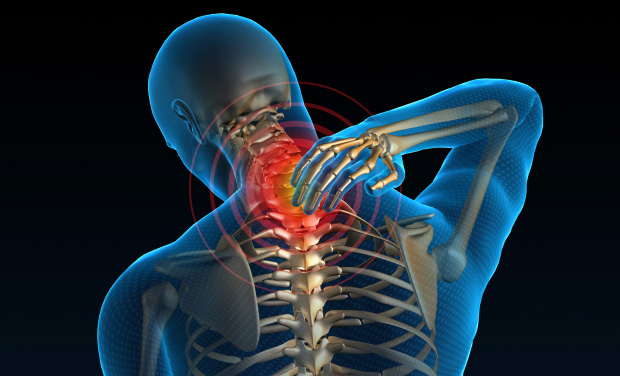Most anyone who uses a smartphone or computer has experienced neck pain but when the intensity of occasional neck pain increases or remains for prolong periods of time, ignoring it could result in chronic pain which could plague you for the rest of your life.
When you feel pain and soreness in your neck, the discomfort is most likely radiating from your facet joints. The facet joints fill the spaces between the bones in your spine and give you the ability to bend and rotate your head. As the body ages, the cartilage that cushions these facet joints can begin to wear away and make movements in the upper back and neck increasingly painful. This condition is known as cervical facet syndrome and can also be caused by inflammation of the facet joints from trauma and poor posture.
Severe pain ranging from the base of the skull to mid-back can be a sign of cervical facet syndrome. People who suffer from the condition experience shoulder pain and numbness in the arms and hands as a result of the stress on the essential facet joints. Chronic cervical facet syndrome pain can leave patients unable to work or complete simple tasks. The intense pain can also alter sleep habits and cause fatigue. Cervical facet syndrome can be a life altering condition and leaving the condition undiagnosed and untreated could bring more excruciating chronic pain.
When cervical facet syndrome advances and cartilage disappears between joints, the body produces osseous growths in attempts to support the joints. These growths or bone spurs compress the nerves and causes nerve pain and numbness in the fingertips. Bone spurs can also cause radiating pain throughout the limbs, and some severe cases can result in difficulty swallowing and breathing.
A cervical facet syndrome diagnosis doesn’t have to mean a life sentence of chronic pain. There are treatments for the condition that can alleviate pain and restore mobility. One of the most non-evasive treatments for cervical facet syndrome is postural correction. Correcting your posture can greatly improve the strain on your facet joints. At times, postural correction could be as simple as performing daily exercises to strengthen the spine and align your body. Ergonomic seating and workspaces can also aid your corrective measures. For the best results, a physical medicine professional should be consulted for a posture assessment. Other treatments for cervical facet syndrome include soft tissue massage and physical therapy. Many patients enjoy a return of functionality and reduction of pain with effective physical therapy treatments.
Advanced cervical facet syndrome may need to be treated with anti-inflammatory, muscle relaxant and pain medications. The risks with these medications can be high and side effects include constipation, nausea, and blurred vision. Painkillers also carry a high risk of increased tolerance and addiction. Extended use of painkillers can cause irritability and anxiety. Withdrawal symptoms are also a concern for some when the use of pain medication stops.
Joint injections are also a treatment option for cervical facet syndrome. Medical branch blocks can be performed by injecting a localized anesthetic with steroid medication to reduce pain. It can be difficult to pinpoint the joint causing pain so several injections may be necessary before targeting the area that will bring relief.
Early detection and treatment are essential to avoiding the constant pain of cervical facet syndrome. It’s important to get any persistent neck and upper back pain examined by a professional to begin a correction plan that may save you from chronic pain and bone spurs. Pain doesn’t have to limit your life; you could be one exam away from beginning the journey to restore pain-free, full range mobility.

